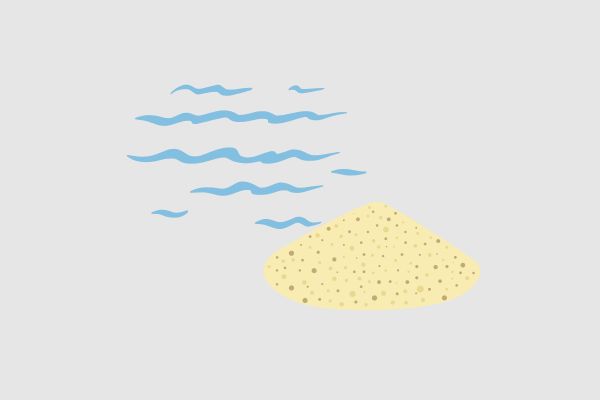What are details of Circular 14/2024/TT-BTNMT on technical regulations on exploration and classification of marine sand reserves and resources in Vietnam?
What are details of Circular 14/2024/TT-BTNMT on technical regulations on exploration and classification of marine sand reserves and resources in Vietnam?
On August 30, 2024, the Minister of Natural Resources and Environment issued Circular 14/2024/TT-BTNMT DOWNLOAD regulating the technical regulations on exploration and classification of marine sand reserves and resources in Vietnam:
Circular 14/2024/TT-BTNMT applies to state agencies managing geology and minerals; organizations and individuals involved in activities related to the exploration and evaluation of marine sand reserves and resources.
The criteria, classification, and assessment levels of marine sand reserves and resources are implemented according to the provisions of Articles 5, 6, and 7 of Circular 60/2017/TT-BTNMT dated December 08, 2017, by the Minister of Natural Resources and Environment particularly regulating the classification of reserves and resources of solid minerals.

What are details of Circular 14/2024/TT-BTNMT on technical regulations on exploration and classification of marine sand reserves and resources in Vietnam? (Image from the Internet)
What are requirements for the Exploration and Classification of marine sand reserves and resources in Vietnam?
According to Article 6 of Circular 14/2024/TT-BTNMT, the requirements for the exploration and classification of marine sand reserves and resources in Vietnam are stipulated as follows:
(1) Adhere to the principles of sequential exploration, from general to detailed, from the surface to depth, from small-scale mapping to large-scale mapping.
(2) Collect comprehensive geological data and documents to serve the assessment of quality, reserves, and mining conditions as a basis for preparing mining project investment studies.
(3) Collecting and compiling original documents in the exploration of marine sand must comply with the provisions of Circular 43/2016/TT-BTNMT dated December 26, 2016, by the Minister of Natural Resources and Environment regulating the collection and compilation of original documents in basic geological investigation and mineral exploration.
(4) Tasks of exploring offshore sand mines:
- Detailed determination of the geological structure of the mine, the characteristics of the distribution and shape of marine sand bodies; determination of lithological and mineral composition, and assessment of the distribution of minerals within the sand; sampling to determine grain composition, physicomechanical properties, and beneficial or harmful materials within the marine sand body.
- Fully assess the quality and determine the recovery rate of offshore sand for utilization, and potential recovery of useful components in the sand (if any).
- Assess hydro-dynamic, geotechnical conditions, factors impacting the marine environment, ecosystem, and geological hazards.
(5) Exploration work is conducted across the entire exploration area and depth of marine sand distribution using a combination of primary methods: geodetic; geological; geophysical; hydro-dynamic observation; environmental geology, geological hazards; digital modeling; exploratory works; sampling and sample processing; analysis by chemical and physicomechanical methods; determining potential, utilization fields of marine sand; exploitation and processing technology for marine sand.
(6) Requirements for exploratory works:
- Selection of exploratory work types (machine drilling, vibrational pipe) based on water depth, geological conditions, construction conditions, and technical features of the equipment.
- Orientation density of exploratory works for offshore sand mines and technical construction requirements are referred to in Annex 2 attached to this Circular.
(7) The sampling rate in exploratory works must reach ≥ 75%.
Guidance on classification of groups of exploration of marine sand resource and reserve in Vietnam under Circular 14/2024/TT-BTNMT
According to Annex I attached to Circular 14/2024/TT-BTNMT, the guidance on classification of groups of exploration of marine sand resource and reserve in Vietnam is as follows:
(1) Simple mine group (Group I)
(i) Simple geological structure. Perimeter variability coefficient (µ) less than 1.4; thickness variability coefficient (Vm) less than 40%; grain composition variability coefficient (Vc) less than 40%; and sand content coefficient (Kp) from 0.8 to 1.0.
(ii) Large scale, sand body length greater than 10,000 m, sand body width relatively stable greater than 1,000 m, simple sand body shape, and relatively flat base.
(2) Relatively complex mine group (Group II)
(i) Relatively complex geological structure. Perimeter variability coefficient (µ) from 1.4 to 1.6; thickness variability coefficient (Vm) from 40 to 100%; grain composition variability coefficient (Vc) from 40% to 100%; and sand content coefficient (Kp) from 0.6 to 0.8.
(ii) Medium scale, sand body length from 5,000 m to 10,000 m, sand body width unstable from 300 m to 1,000 m, relatively complex sand body shape.
(3) Complex mine group (Group III)
(i) Complex geological structure. Perimeter variability coefficient (µ) from 1.6 to 1.8; thickness variability coefficient (Vm) from 100 to 150%; grain composition variability coefficient (Vc) from 100 to 150%; and sand content coefficient (Kp) from 0.4 to 0.6. Narrow sand bodies, interspersed with clay layers, rock, and boulders.
(ii) Medium scale, sand body length less than 5,000 m, sand body width unstable less than 300 m, complex sand body shape.
LawNet